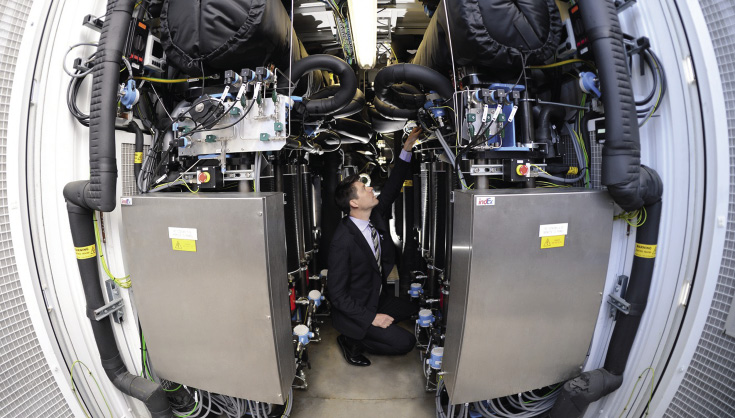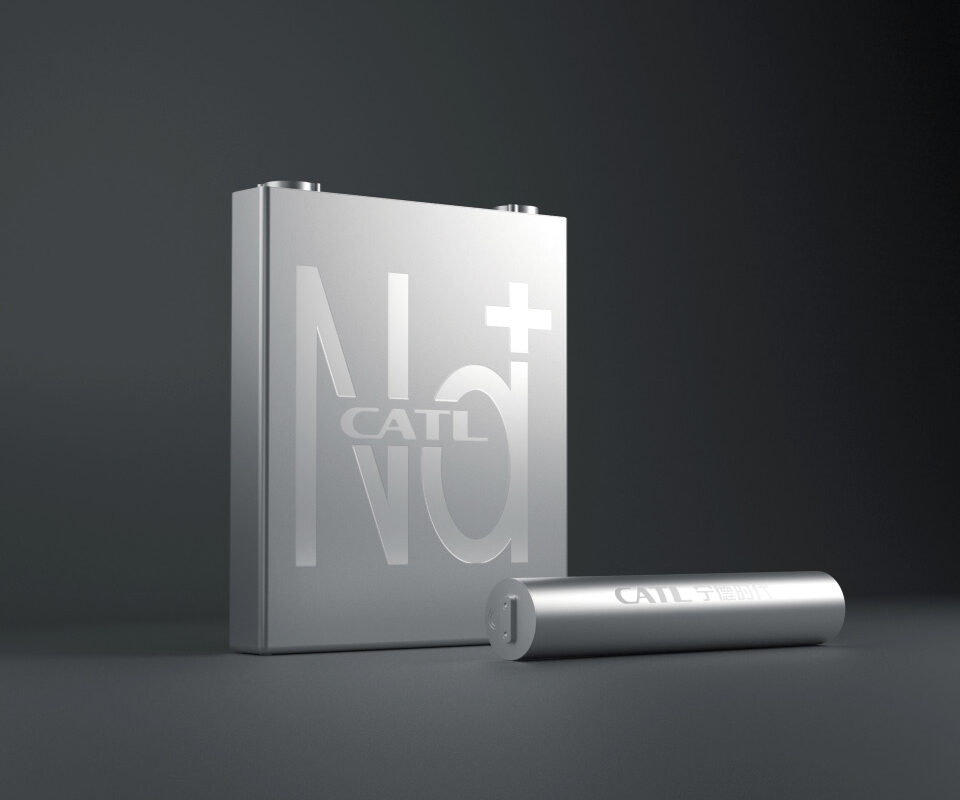From Energy Storage North America special edition
Pumped hydro storage
Pumped hydro storage, a tried-and-true technology for long-duration storage, involves using electricity to pump water to an upper reservoir from a lower reservoir or lake. When power demand is high, the water flows downhill from the upper reservoir, powering hydroelectric turbines that generate electricity.
Closed-loop pumped hydro uses two man-made reservoirs, with no connection to a natural body of water. A closed-loop system can be designed to generate power for eight to 10 hours, and to recharge by pumping water uphill for 10-14 hours, as indicated by plans for projects in Montana and Arizona.
Most of the 27 licensed pumped hydro projects in the United States, ranging across 16 states and totaling 18.8 GW, are at least 30 years old. However, there is also a robust pipeline: Preliminary permits for 20 GW of new capacity have been awarded by the Federal Energy Regulatory Commission, and applications have been submitted for another 19 GW.
Attend Energy Storage North America
There may be even more feasible pumped hydro sites in the United States, as an estimated 500,000 sites are technically suitable globally, meaning that they have potential locations for both high and low reservoirs.
Cost projections for pumped hydro are scarce, perhaps because there is only one modular component used – the reversible hydro turbines. All other costs are site-specific, from engineering and earth moving, to construction of the powerhouse containing the turbines.
One cost projection concluded that pumped hydro storage with more favorable financing is cost-competitive with lithium-ion battery storage.
Copenhagen Infrastructure Partners appears to back that assessment, given the firm’s equity investment last summer in a 400 MW pumped hydro storage project in Montana. The project has a license for construction and operation, and construction could begin next year.
Power-to-hydrogen (or other fuels)
Power-to-hydrogen is another established technology, at least for installations of modest scale. Hydrogen that is produced using electrolysis can be stored and used later to generate electricity via fuel cells. This is a potential long-duration energy storage option.
At least three small industrial installations have been announced over the past year, all using the proton exchange membrane (PEM) electrolysis technology to produce “green” hydrogen by using solar or wind power to electrolyze water into hydrogen and oxygen.The resulting hydrogen may be stored in pressurized vessels, while it awaits use in fuel cells. Because the hydrogen storage is separate from the electrolyzer units, there is no technical limit to hydrogen storage capacity for a given system of electrolyzers.
While PEM and other electrolysis technologies are well-established, achieving economies of scale is challenging. Hydrogen technology may need to expand its foothold across a range of markets, scaling up and driving costs down, before it can become a cost-competitive storage option.
That scaling-up process has begun. Last February, Hydrogenics Corp. announced plans to build a 20 MW PEM electrolyzer system in Canada for Air Liquide. At the time, the system was described as the world’s largest hydrogen electrolysis project, with an output of just under 3,000 tons of hydrogen annually.
Also last February, a framework contract for a 30 MW electrolyzer project in Switzerland was announced by a division of Norwegian-based hydrogen company Nel ASA. The project will begin with a 2 MW containerized PEM electrolyzer and will sell hydrogen to Hydrospider AG, an affiliated company of H2 Energy, for a planned fleet of fuel cell trucks.
Finally, ITM Power has announced a 10 MW PEM electrolyzer in Germany, and has a design for a 100 MW system – a size for which it reports increasing interest from potential industrial customers. ITM reports that electrolyzer costs are now under €800 per kW of capacity, and will decline to under €500 per kW by the mid-2020s.
Looking ahead, an industry and academic consortium in the Netherlands has set a goal to build a gigawatt-scale electrolysis plant. They aim to produce green hydrogen by 2025 or 2030, at a cost of about €350 million.
Another possible storage solution is to use green hydrogen to manufacture ammonia. Japan’s JGC Corp. has reported an efficient method of converting hydrogen to ammonia, which can later be combusted to generate electricity. JGC argues that this offers various advantages over hydrogen in terms of safety and cost-effectiveness.
Thermal storage
A well-known application of thermal storage is molten salt storage, typically associated with the Solana concentrating solar power plant in Arizona. The heat is used to drive a steam turbine. Yet thermal storage can involve other means of storing heat, and can also involve storing “cold.”
England-based Highview Power began operating a pilot-scale 5 MW cryogenic energy storage facility near Manchester in June 2018. The technology uses electricity to chill and liquefy air at -320˚F, store the liquid air in insulated, low-pressure tanks, and later expose the liquid air to ambient temperatures to rapidly re-gasify the air, expanding it to 700 times its liquid volume in order to provide power to turbines.
Highview Power estimates a levelized cost of $140/MWh for a 200 MW/2 GWh (10-hour) system. And similar projects are on the way. Last July, for example, Highview Power announced a contract with Nebraska-based Tenaska Power Services to help develop up to 4 GWh of cryogenic energy storage plants in the U.S. over a two-year period.
Thermal storage can be as basic as storing ice for later use in air conditioning. Instead of generating electricity, making ice can shift power demand, especially to peak solar generation hours during the summer months, with the ice later used for air conditioning.
California-based Ice Energy is currently installing 1,200 ice-energy systems under a contract with Southern California Edison (SCE). The systems will be centrally controlled to manage peak demand and load shifting.
Siemens Gamesa offers what it calls a cost-competitive technology: electric thermal energy storage. Electricity is used to heat volcanic stones in an insulated container to up to 600°C. The heat is later converted to electricity using a conventional steam turbine, achieving a 45% round-trip efficiency. The company says the technology could be used to retrofit retired fossil-fired power plants and plans to begin operation at a pilot facility later this year.
Looking ahead
The storage developments of the past year have shown that battery storage is not the only game in town. Other technologies that are capable of longer-term storage are also moving forward. Cost projections are starting to be made public, and these technologies should be gaining more attention in the year ahead.
This content is protected by copyright and may not be reused. If you want to cooperate with us and would like to reuse some of our content, please contact: editors@pv-magazine.com.



This year’s announcement by Australia’s Climate Change Technologies (CCT) about their production of their Thermal Energy Device (TED) energy storage units was most exciting to me. I’m curious what I don’t know that might explain why it doesn’t make your list.
PHS has no “breakthroughs”, technical or otherwise, as the author claims. PHS was fundamentally the connection of two reservoirs over elevation a century ago, and it remains that way today. The Blakers use of a geospatial tool to note, ‘look, here’s a hill, next to a basin, is interesting on global scale but is hardly a technical innovation. Among the Blakers sites identified by automata are desert sites in the Sahara with no water resource, and the unintended use of the ocean as a lower reservoir.
Like nuclear fusion, FERC has had PHS many proposals sitting for decades, and will likely continue that way. Not one of them is a serious commercial prospect. No major PHS projects have been built in the US for several decades.
Thanks for reading. “Breakthroughs” can be financial, not just technological: “One cost projection concluded that pumped hydro storage with more favorable financing is cost-competitive with lithium-ion battery storage. Copenhagen Infrastructure Partners appears to back that assessment, given the firm’s equity investment last summer in a 400 MW pumped hydro storage project in Montana.”
More recently, I have noticed that some PHS sites in the U.S. pipeline are in states not identified by the Australian researchers as having any potential.
Molten salt isn’t the only heat storage medium that can be used. At least one company uses graphite to store heat at about twice the temperature that is practical with molten salt.
MIT scientists have created a novel conceptual design called Sun in a Box, that heats silicon to four times the temperature of molten salts. 4,000 F versus 1,000 F. The design was for a graphite container for the hot silicon. They weren’t sure if it would hold up to such high temperatures, but their prototype showed that the container actually got stronger.
If these storage options are only 50% efficient at storing (electricity) then almost twice the solar and wind will be needed, compared to batteries. In that sense, pumped hydro would be best since it is not wasting energy in a thermal process. Of course, if the generation is already thermal, like concentrated solar thermal or molten salt nuclear, then the thermal storage is the most efficient extension.
The turbines commonly used for energy recovery are heat-based machines; meaning that the exhaust is cooler than the (expansion-rotor) intake. Simply, the loss of temperature corresponds to the ‘loss’ of heat (energy) converted into (shaft) mechanical energy.
It is (disappointingly) surprising how little ‘would-be’ practitioners of energy recovery understand about the working of the actual turbo-machines which they, glibly, propose using.
Storing ‘cold’ for example is based on use of ambient heat to generate prodigious quantities of gas by converting cryogenically densified gas material.
The resulting gas, however, contains little heat that can be extracted by thermal turbines.
Presumably, it is a common notion that turbines are driven by the speed of air flow (as by a ‘pin-wheel’); but this is a basic misconception. In a closed system like a turbine-generator, mass must flow out as fast as it flows in.
Flow speed (ie, kinetic energy) cannot be decreased inside the machine w/o continuous (and disastrous) pressure-building!
Kinetic energy cannot be extracted (as it is by a pin-wheel).
For this reason, most conceptual compressed air energy storage architectures employ fuel burning to add the needed heat (back into cooled compressed air). Thus, all the recovered energy derives from the heat injected by fuel.
Bottom line: Energy storage in such systems requires heat storage for energy recovery. Heat storage and recovery, taken together, is difficult; but possible to do.
PHS in contrast, is based on the use of gravity, not heat. Energy storage and recovery by use of gravity (ie, weight) is easier to do; hence the noteworthy existing widespread deployments.
(You might leak the heat-concept foundational basis for gas turbines.)
Henry
The number of phs proposals in the FERC queue is not representative of anything because most of them are poorly conceived and nonviable. The cited Arizona projects are facing huge opposition. That said, there are gigawatts of excellent phs projects in development in the US, and market drivers absent since the original era of phs development here are emerging. Thus, expect to see a number of large projects built here in the coming decade.